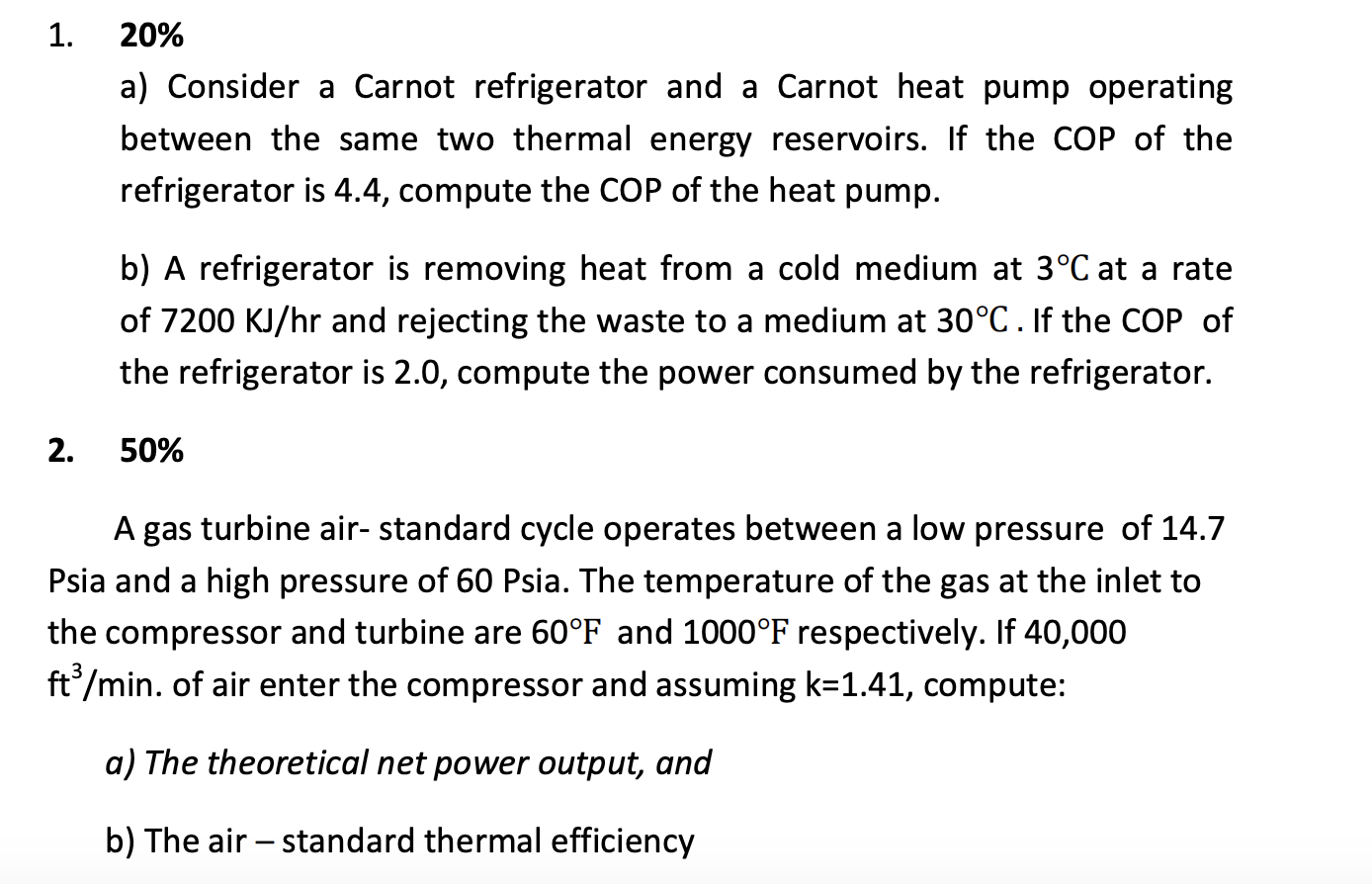


(4- points) (e) Find the pressure at four points during the cycle. (4-points) (d) Find the specific volume at the beginning and end of heat rejection process. (a) Draw a block schematic diagram of heat pump showing compressor, expansion valve, and heat exchangers (boiler, condenser, evaporator is considered as typical heat exchangers) (4-Points) (b) Show the cycle on P-T, P-v, and T-v diagrams (4-Points) (c) Find the quality at the beginning and end of isothermal heat addition and heat rejection process. The specific volume during the isothermal heat addition process at 0☌ changes from 0.00841 m3/kg to 0.05994 m3/kg. The heat is transferred to the R-134a at 0☌. Heat is rejected from the R-134a at 35☌, during which process the R-134a changes from saturated vapor to saturated liquid. There are three types of heating pumps in total: air, ground or water source.Transcribed image text: Consider a Carnot-cycle heat pump with R-134a as the working fluid. It is even known that this savings is over 50%. Compared to fossil fuels, heat pumps provide much higher savings. Heating pumps are preferred for heating in winter and cooling in summer without any problem. As a result, the transfer to the distribution system takes place. Then, high temperature is provided with the steam transferred to the compressor. The low-temperature heat taken from the air, water or soil is somehow converted into steam thanks to the refrigerants. This type of pumps can be used alone or with an additional system. In fact, the working principle of heating pumps is technically no different from a simple refrigerator that we use in our homes today. Heating pumps efficiently use the low-temperature heat they obtain from nature. The energy crisis that emerged in the global world in 1973 makes heating pumps popular again. Although important developments have been observed in these pumps after the 1950s, heat pumps begin to fall out of favor due to the relatively high cost of establishment. In the period just before World War II, many engineers worked intensively on the development of heating pumps. In this way, the heating pumps are activated for the first time. Lord Kelvin suggests that refrigeration machines can actually be used for heating purposes. Essentially known as a type of refrigeration cycle, heating pumps underwent a serious transformation in 1850. Nicolas Carnot introduced the basic principles of the heat pump in 1824. What is the Working Principle of Central Heating Pump?


 0 kommentar(er)
0 kommentar(er)
